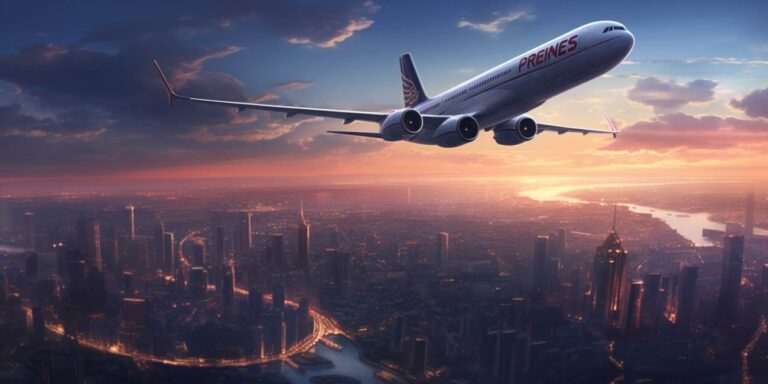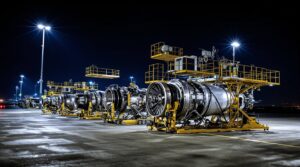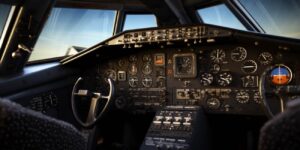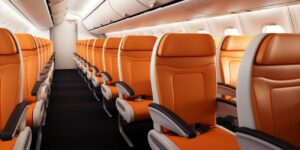Design Philosophy: One of the prominent Airbus vs Boeing differences lies in their design philosophies. Airbus tends to favor fly-by-wire technology, emphasizing computerized control systems. In contrast, Boeing traditionally adheres to a more manual approach, placing a higher degree of control in the hands of the pilots.
Global Partnerships: Both giants engage in global partnerships, but the nature of these collaborations varies. Airbus often forms partnerships with various European countries through the Airbus Consortium, fostering a collaborative approach. Meanwhile, Boeing tends to maintain a more independent stance, relying on its extensive network of suppliers and subcontractors.
Market Share: The rivalry extends to their market share dynamics. Airbus has gradually increased its market share, challenging Boeing‘s historical dominance. The battle for market supremacy intensifies as both companies vie for contracts from airlines worldwide.
Production Techniques: In terms of production techniques, the two giants diverge. Airbus adopts a more standardized approach, often using common components across its range of aircraft, promoting operational efficiency. On the other hand, Boeing often tailors its aircraft to meet specific customer requirements, allowing for more customization but potentially increasing production complexity.
Key Innovations: Airbus and Boeing continually introduce key innovations to stay ahead in the competitive aviation landscape. For instance, Airbus introduced the A380, emphasizing capacity and fuel efficiency, while Boeing‘s Dreamliner focused on cutting-edge materials for improved fuel economy and passenger comfort.
Government Influence: Airbus and Boeing also grapple with government influence. Airbus‘s structure involves collaboration with European governments, which can impact decision-making. Conversely, Boeing, being an American company, navigates its strategies within the framework of U.S. policies and regulations.
These airbus vs boeing differences extend beyond the aircraft themselves, permeating the very essence of how these industry titans operate. As the aviation narrative unfolds, it’s evident that the rivalry between Airbus and Boeing will continue to shape the future of flight.
Airbus vs boeing – comparison of models and technical parameters
When delving into the world of aviation giants, the perpetual rivalry between Airbus and Boeing takes center stage. These two industry behemoths have been locked in a battle for supremacy, constantly pushing the boundaries of innovation and engineering. Let’s embark on a journey through the skies, comparing their flagship models and dissecting the technical parameters that define their excellence.
First up in the Airbus corner is the A320 family, a series of short- to medium-range narrow-body airliners. Boasting state-of-the-art technology, the A320neo (new engine option) stands out with its fuel efficiency and reduced environmental footprint. The utilization of CFM International LEAP-1A engines elevates its performance, providing an unparalleled blend of power and eco-friendliness.
On the opposing runway, Boeing‘s contender, the 737 family, is a force to be reckoned with. The 737 MAX variant, equipped with the CFM International LEAP-1B engines, mirrors its Airbus counterpart in fuel efficiency. The MAX’s redesigned aerodynamics and innovative technologies signify Boeing’s commitment to staying at the forefront of aviation advancements.
Transitioning to the wide-body category, Airbus unfolds the A350 XWB, a long-range, twin-engine jetliner designed for efficiency and passenger comfort. With a focus on aerodynamics, the A350’s composite materials contribute to a lighter airframe, enhancing both fuel efficiency and overall performance. The adoption of Rolls-Royce Trent XWB engines propels the A350 into the echelons of next-generation aviation.
Enter Boeing’s heavyweight contender, the 787 Dreamliner, a long-haul, mid-size wide-body twinjet. The Dreamliner dazzles with its innovative use of composite materials, reducing weight and fuel consumption. Equipped with advanced General Electric GEnx or Rolls-Royce Trent 1000 engines, the 787 epitomizes Boeing’s commitment to revolutionizing air travel.
Comparing these aviation marvels in a tabulated form provides a succinct overview:
| Aircraft | Engine Option | Key Feature |
|---|---|---|
| Airbus A320neo | CFM International LEAP-1A | Fuel efficiency and eco-friendliness |
| Boeing 737 MAX | CFM International LEAP-1B | Redesigned aerodynamics for efficiency |
| Airbus A350 XWB | Rolls-Royce Trent XWB | Composite materials for lightness |
| Boeing 787 Dreamliner | GE GEnx or Rolls-Royce Trent 1000 | Revolutionary use of composite materials |
As we soar through the technical realms of Airbus and Boeing, the competition remains fierce, driving continuous advancements that shape the future of aviation. Stay tuned as these aerospace giants navigate the ever-changing skies of innovation and engineering excellence.
Finanse i strategie marketingowe airbusa i boeinga
The aerospace industry is a battleground where giants like Airbus and Boeing engage in fierce competition. One of the crucial battlegrounds is the fight for market share, a metric that not only reflects the dominance of these titans but also their strategic prowess. Both companies deploy sophisticated pricing strategies to gain a competitive edge.
When it comes to market share, Airbus and Boeing constantly jockey for the top spot. This intense rivalry has led to a delicate balance of power, with each company striving to outdo the other. The market share dynamics often influence the perception of the industry, shaping the narrative of who holds the reins of innovation and customer preference.
Examining their pricing strategies reveals a nuanced approach. Airbus and Boeing, despite being fierce competitors, adopt divergent tactics. Airbus tends to focus on a broader market reach, offering a range of aircraft catering to different needs. This approach, while potentially sacrificing exclusivity, helps them capture a wider market share. On the other hand, Boeing, at times, opts for a more premium positioning, emphasizing technological advancements and premium features, aiming for profitability over sheer volume.
Their pricing strategies are also intricately linked to their respective research and development initiatives. Airbus, with its commitment to innovation, allocates substantial resources to R&D. This investment not only keeps them at the forefront of technology but also allows them to introduce a variety of products at different price points. Boeing, while equally committed to innovation, often channels its R&D efforts into cutting-edge technologies that can justify premium pricing.
Delving into the world of research and development, Airbus and Boeing constantly push the boundaries. Their aircraft represent the culmination of years of innovation, with both companies striving to offer the latest in aeronautical technology. The battle for supremacy extends beyond the present, as ongoing R&D projects shape the future landscape of aviation.
As a testament to their commitment to research and development, both companies engage in collaborative efforts with suppliers, universities, and industry partners. These alliances not only enhance their technological capabilities but also foster an environment of innovation, positioning Airbus and Boeing as pioneers in the aerospace sector.
Safety and failures of airbus and boeing aircraft
When it comes to aircraft safety, the Boeing and Airbus manufacturers have had their share of challenges, particularly concerning engine failures and crashes. Both giants have strived to innovate with advanced pilot assistance systems, seeking to enhance flight safety and efficiency.
Boeing’s 737 MAX series faced turbulence due to a tragic string of crashes, primarily attributed to the MCAS (Maneuvering Characteristics Augmentation System). The system, intended to prevent stalls, faced scrutiny after two fatal accidents, prompting regulatory review and overhaul.
Meanwhile, Airbus encountered its own challenges. The A320neo series experienced engine failures linked to the Pratt & Whitney PW1100G engines. These incidents led to temporary flight restrictions and intense scrutiny to rectify potential design flaws.
Advancements in pilot assistance systems like Boeing’s MCAS or Airbus’s fly-by-wire technology have aimed to assist pilots in handling complex situations. However, the reliance on automation has stirred debates on adequate training and the necessity for manual flying skills.
The significance of these crashes and engine failures compelled regulators to mandate software updates, enhanced training, and rigorous safety evaluations. Both Boeing and Airbus have committed substantial resources to ensure that their aircraft meet stringent safety standards.
In addressing engine failures, both manufacturers collaborated with engine suppliers to enhance design and functionality. Rigorous testing and modifications were imperative to mitigate risks and ensure the reliability of propulsion systems.
Despite these setbacks, the aviation industry continues to prioritize safety through comprehensive investigations, technological advancements, and enhanced collaboration among manufacturers, regulators, and airlines.






